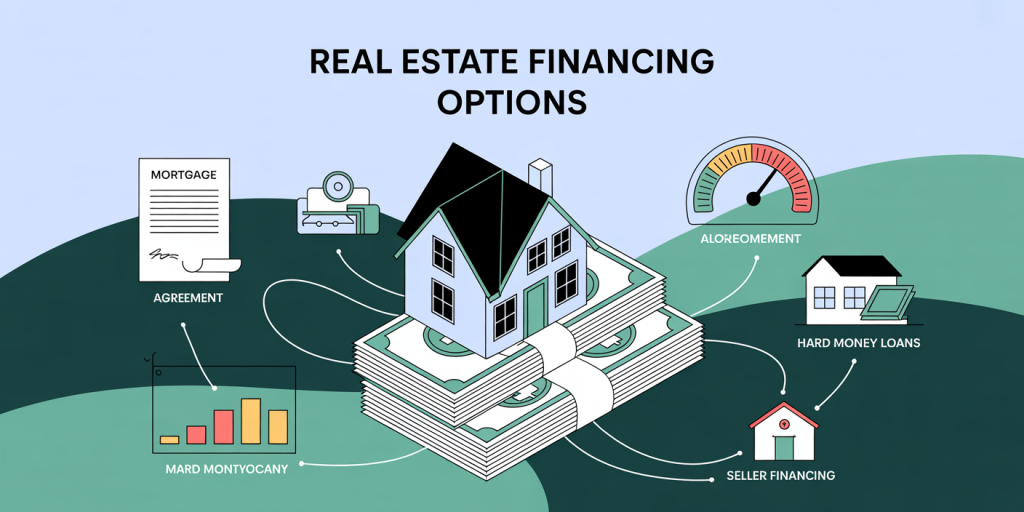Real estate investing remains one of the most popular methods for building wealth and securing financial freedom. Unlike stocks or bonds, real estate offers tangible assets that can generate passive income, appreciate over time, and provide tax advantages. However, succeeding in real estate investment requires understanding various factors such as market trends, property types, financing options, and risk management. This article serves as a comprehensive primer for those looking to enter the real estate market, backed by practical examples, statistical insights, and expert perspectives.

The Significance of Real Estate in Wealth Building
Historically, real estate has been a powerful vehicle for wealth creation. According to the Federal Reserve’s Survey of Consumer Finances (2021), nearly 65% of American households hold real estate assets, making it one of the largest components of personal net worth. Real estate’s appeal lies not only in potential property appreciation but also its capacity to generate consistent rental income.
Consider the case of the Smith family in Atlanta, Georgia. In 2010, they purchased a duplex for $150,000. Over a decade, the property value appreciated by an average of 6% annually, and rental income covered their mortgage plus provided supplemental income. This example highlights how acquiring the right property in a promising market can yield significant returns.
While the prospect is enticing, understanding the realities of the real estate landscape is crucial. Factors such as location, economic conditions, property management, and financing terms play vital roles in investment outcomes.
Types of Real Estate Investments: Residential, Commercial, and Beyond
Real estate investment is not a one-size-fits-all domain. Investors can choose from different asset classes, each with distinct characteristics, risks, and returns. Here is a detailed look at the primary types:
Residential Properties
Residential real estate encompasses single-family homes, condominiums, townhouses, and multi-family apartment buildings. This sector is generally considered beginner-friendly due to lower entry costs and easier financing.
For instance, a first-time investor might purchase a single-family home in a growing suburban suburb and rent it out to tenants. According to the National Association of Realtors (2023), the median price for single-family homes increased by 5.7% year-over-year, indicating steady appreciation potential.
Commercial Real Estate
Commercial properties include office buildings, retail centers, industrial warehouses, and hotels. These investments often require larger capital but can offer higher yields and longer lease terms.
One notable example is the purchase of a small retail plaza in Austin, Texas, by a group of investors. With tenants signing 5-year leases on average, the investors enjoyed a predictable cash flow with annual cap rates around 7-9%, outperforming many residential investments.
Other Investment Vehicles
Beyond physical properties, real estate investment trusts (REITs) offer exposure to real estate markets without direct ownership. REITs allow individuals to invest in diversified portfolios, including commercial and residential assets, with the liquidity of stock markets.

According to Nareit data (2023), the average annual return of equity REITs over the past decade was approximately 9.5%, rivaling many traditional stock indices. This makes REITs a viable option for investors seeking real estate exposure without the complexities of property management.
Comparative Table: Types of Real Estate Investments
| Type | Typical Investment Size | ROI Range | Liquidity | Management Complexity |
|---|---|---|---|---|
| Residential | $50,000 – $500,000 | 6% – 12% annual return | Low | Moderate |
| Commercial | $500,000 – $10M+ | 7% – 15% annual return | Low | High |
| REITs | $1,000+ | 7% – 10% annual return | High (publicly traded) | Low |
Financing Strategies and Considerations
Navigating financing options is a critical skill for real estate investors. The strategies employed greatly influence cash flow, risk, and profitability.
Traditional Mortgages
Most new investors use traditional mortgage loans, featuring down payments typically ranging from 10% to 30%. Interest rates vary based on creditworthiness, loan type, and prevailing market conditions. For example, a 30-year fixed-rate mortgage on an investment property might currently bear an interest rate around 6.5% (Federal Reserve, 2024).
Leverage Benefits and Risks
Leverage allows investors to control larger assets with less upfront capital, potentially amplifying returns. For example, with 20% equity and an 8% ROI on property appreciation, the effective return on invested capital can be substantially higher.
However, high leverage also increases financial risk. Should property values decline or rental income drop, investors might struggle with loan repayments. The 2008 housing crisis illustrated how excessively leveraged investors suffered significant losses.
Alternative Financing
Other financing options include: Hard Money Loans: Short-term, high-interest loans ideal for fix-and-flip investors. Private Money Lending: Funds from private investors or groups, often with flexible terms. Seller Financing: The property seller acts as a lender, useful when buyers face traditional financing hurdles.

Each financing option has trade-offs regarding cost, flexibility, and risk, requiring careful evaluation.
Due Diligence: Market Research and Property Analysis
Conducting thorough due diligence is a foundational step in real estate investing. This process involves analyzing market conditions, evaluating properties, and forecasting potential returns.
Market Research
Understanding local economic indicators such as employment growth, population trends, and infrastructure projects can provide insights into future property demand. A 2023 CBRE report identified cities like Phoenix, Raleigh, and Denver as hotspots due to robust job creation and inbound migration.
Property Assessment
Prospective investors should examine property conditions, age, and necessary repairs. For example, a property inspection might reveal roof damage or plumbing issues that could cost tens of thousands in repairs, impacting profitability.
Rental Income vs. Expenses Analysis
Calculating net operating income (NOI) and cash flow ensures the investment aligns with financial goals. Using the example of a four-unit apartment building generating $4,000 monthly rent with $1,200 in monthly expenses (taxes, maintenance, insurance), the NOI would be $2,800.
Managing Risks and Mitigating Challenges
Like any investment, real estate carries risks that require proactive management.
Vacancy and Tenant Risks
Periods of vacancy reduce cash flow, while problematic tenants can cause property damage or legal complications. Successful landlords often screen tenants thoroughly and maintain contingency funds to cover vacancies.
Market Volatility
Property values can fluctuate due to economic downturns, interest rate hikes, or local market changes. Diversifying investments geographically or across asset types can reduce exposure.
Regulatory and Legal Risks
Changes in zoning laws, rent control policies, or property taxes can affect investment returns. For example, New York City’s rent stabilization laws limit rent increases, potentially capping returns for landlords.
Emerging Trends and Future Outlook
The landscape of real estate investing is evolving rapidly, impacted by technological advancements, demographic shifts, and economic policies.
PropTech and Data Analytics
Technologies such as artificial intelligence, big data, and blockchain are transforming property analysis, management, and transactions. Platforms like Roofstock and Fundrise enable online property investments with reduced barriers.
Demographic Shifts
Millennials and Gen Z are redefining housing demand trends, favoring urban living and amenities. This affects the types of properties that appreciate fastest, with multifamily and mixed-use developments becoming more attractive.
Environmental Sustainability
Green buildings and energy-efficient property developments are gaining preference, driven by regulations and consumer awareness. Investors incorporating sustainability may benefit from lower operating costs and higher tenant retention.
The Impact of Interest Rates
Ongoing Federal Reserve rate hikes could slow property appreciation but might also temper overheating markets. Skilled investors will seek value-driven opportunities as market dynamics adjust.
—
Real estate investing offers significant potential for wealth accumulation, but it requires knowledge, planning, and adaptability. By choosing appropriate property types, securing suitable financing, conducting detailed due diligence, and managing risks effectively, investors can build resilient portfolios positioned for future success in a changing economic environment.